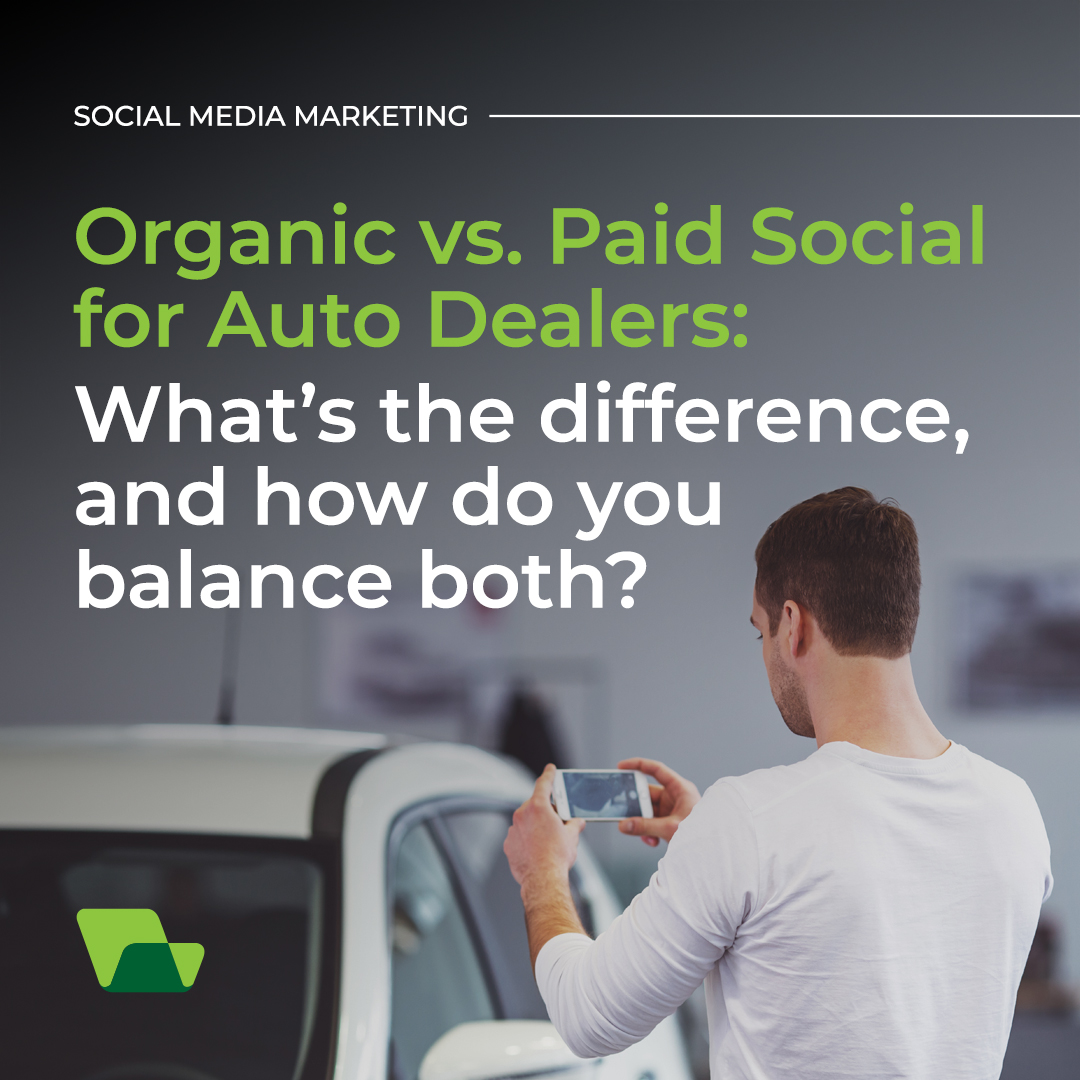Inside a high-performing dealership AI social strategy.
How AI is reshaping organic and paid social, and why people still matter.

Social media for dealerships has changed dramatically. AI now influences everything from how ads find the right shoppers to how content is created, tested, and optimized. But despite all of these advancements, one thing remains true:
AI doesn’t replace your social strategy; it strengthens it.
And the dealerships seeing the biggest lift today are the ones blending AI-driven tools with human creativity and judgment.
AI in paid social: Smarter, faster, more predictive.
The biggest shift in Paid Social isn’t just automation — it’s intelligence. Platforms like Meta Andromeda analyze signals across creative, engagement patterns, and outcomes to predict who’s most likely to take action. Instead of relying on tight audience filters, AI now determines the best delivery moments and placements to match your goals.
For dealerships, this means broader audiences often perform better, creative variety matters more than ever, and your own first-party data plays a major role in helping the algorithm “learn” what a qualified shopper looks like.
AI handles the heavy lifting of optimization, but your strategic direction still guides what the system tests, prioritizes, and scales.
AI in organic social: Insights + Efficiency = Better Content.
On the organic side, AI tools are speeding up how dealerships create, analyze, and refine content. They surface what’s resonating, recommend improvements, and help repurpose posts across channels.
But AI can’t define your personality, tone, or point of view.
Organic social still thrives on human connection, your team’s stories, your humor, your culture, your commitment to your community. AI helps you work faster, but people help you stand out.
Where AI + Human Strategy meet.
The most effective dealership social strategies today pair AI’s precision with human intuition.
AI supports: trend analysis, creative variations, predictive delivery, performance insights, and pattern recognition.
Humans bring: brand identity, local nuance, storytelling, customer engagement, and strategic thinking.
The result is a social approach that’s modern, efficient, and deeply authentic.
What this looks like for a high-performing dealership.
Dealerships winning with AI aren’t relying on it blindly. They’re using it to amplify what they already do well. Their paid social benefits from smarter delivery and a wider creative mix. Their organic social becomes more consistent, more thoughtful, and more informed by real data. Across both sides, AI becomes a partner that accelerates performance while humans stay in the driver’s seat.
The bottom line.
AI is transforming both organic and paid social, but the dealerships seeing the strongest ROI are the ones using AI to enhance their strategy, not replace it. When you pair AI’s scale and intelligence with human creativity and authentic connection, you build a social presence that performs today and evolves with tomorrow’s platforms.
Want to connect about your digital strategy?
Fill out the form below and someone from our team will reach out to you to set up a time to connect.
Fields marked with * are required


